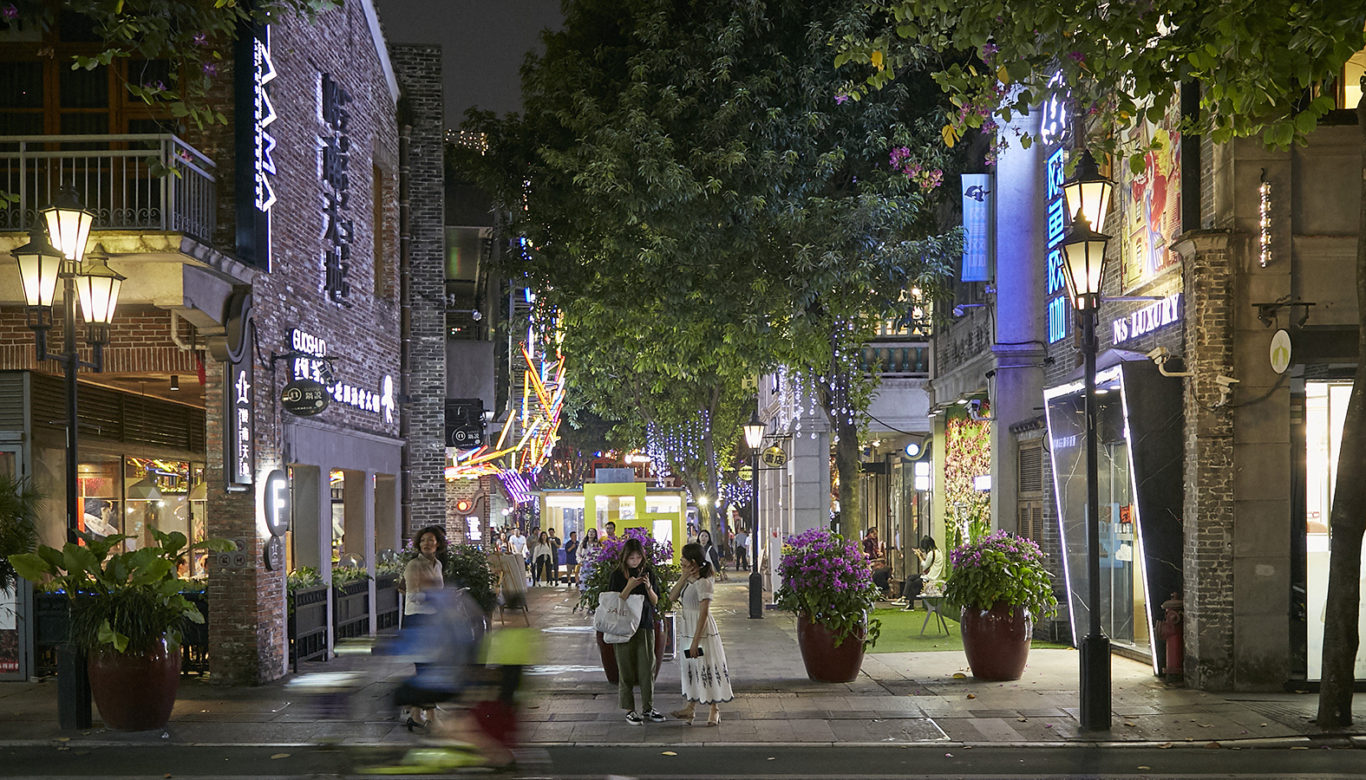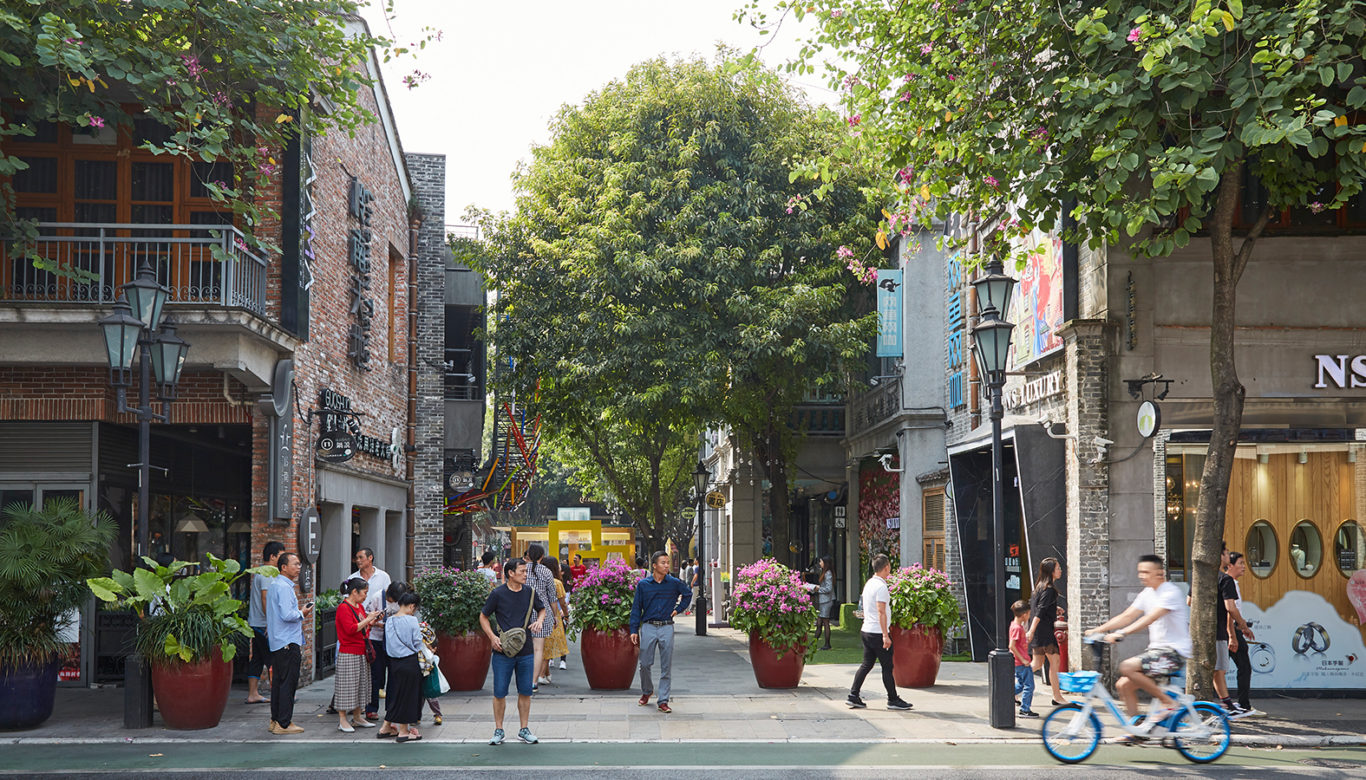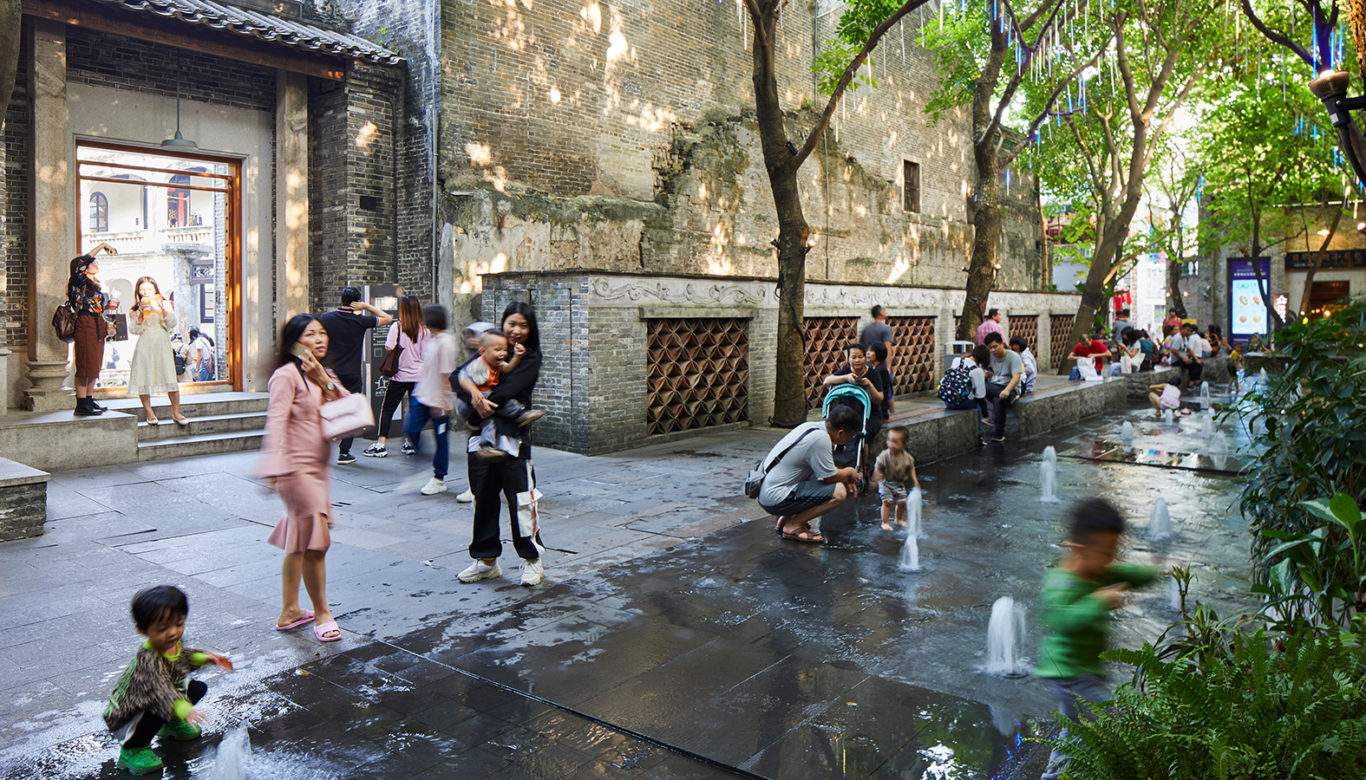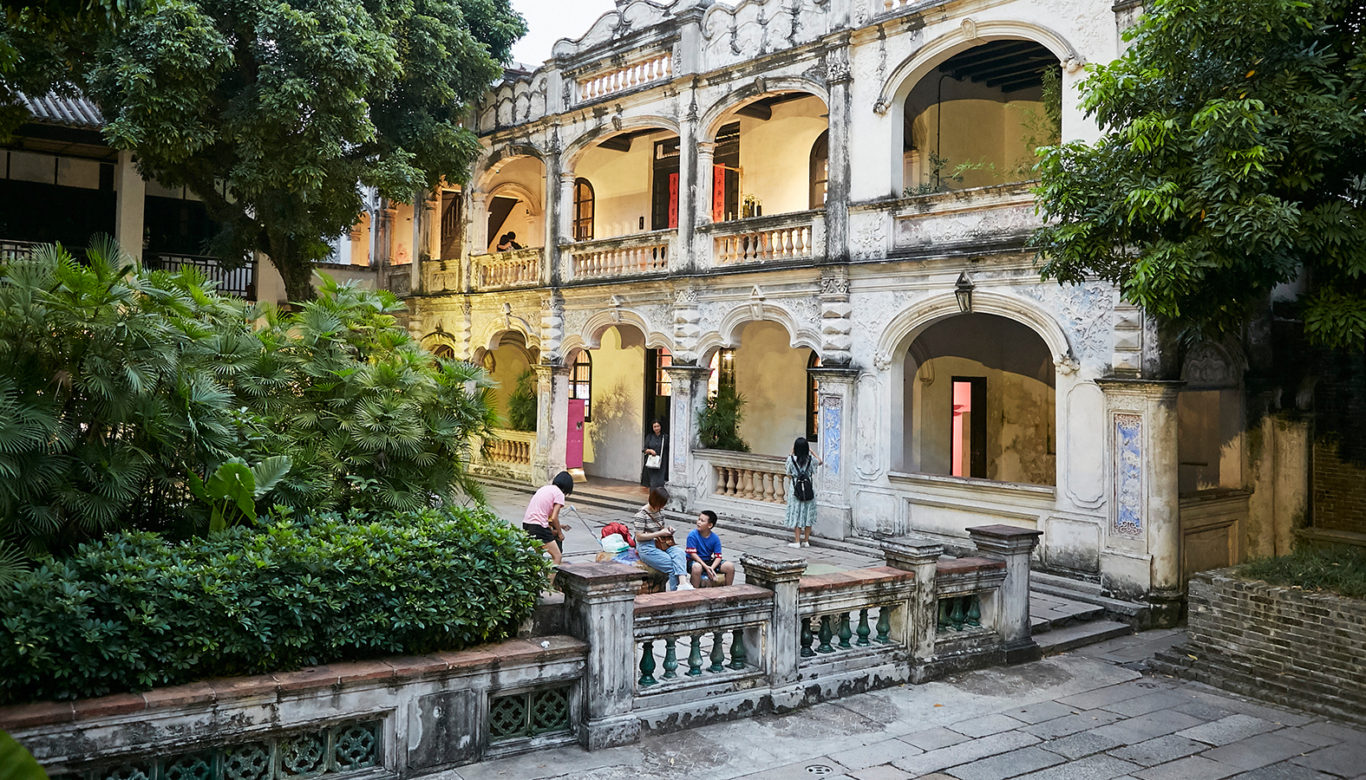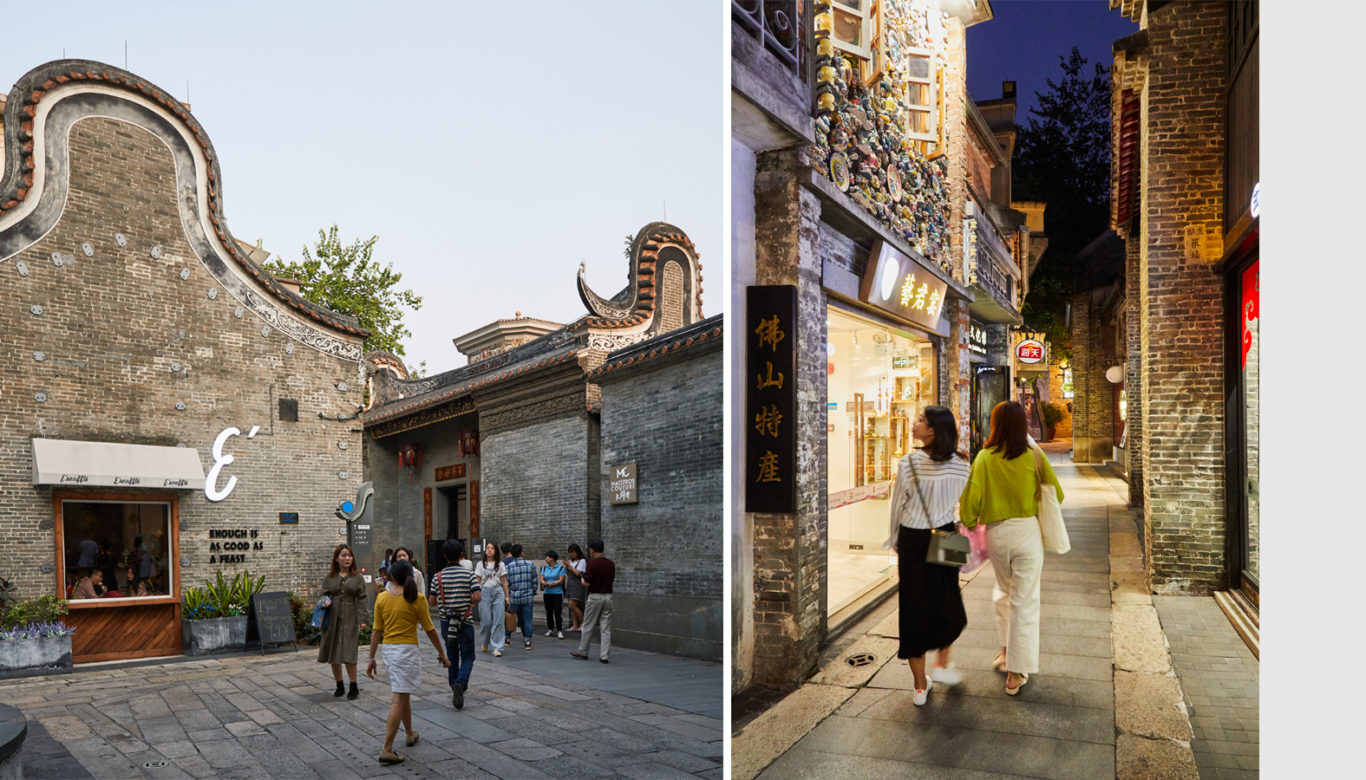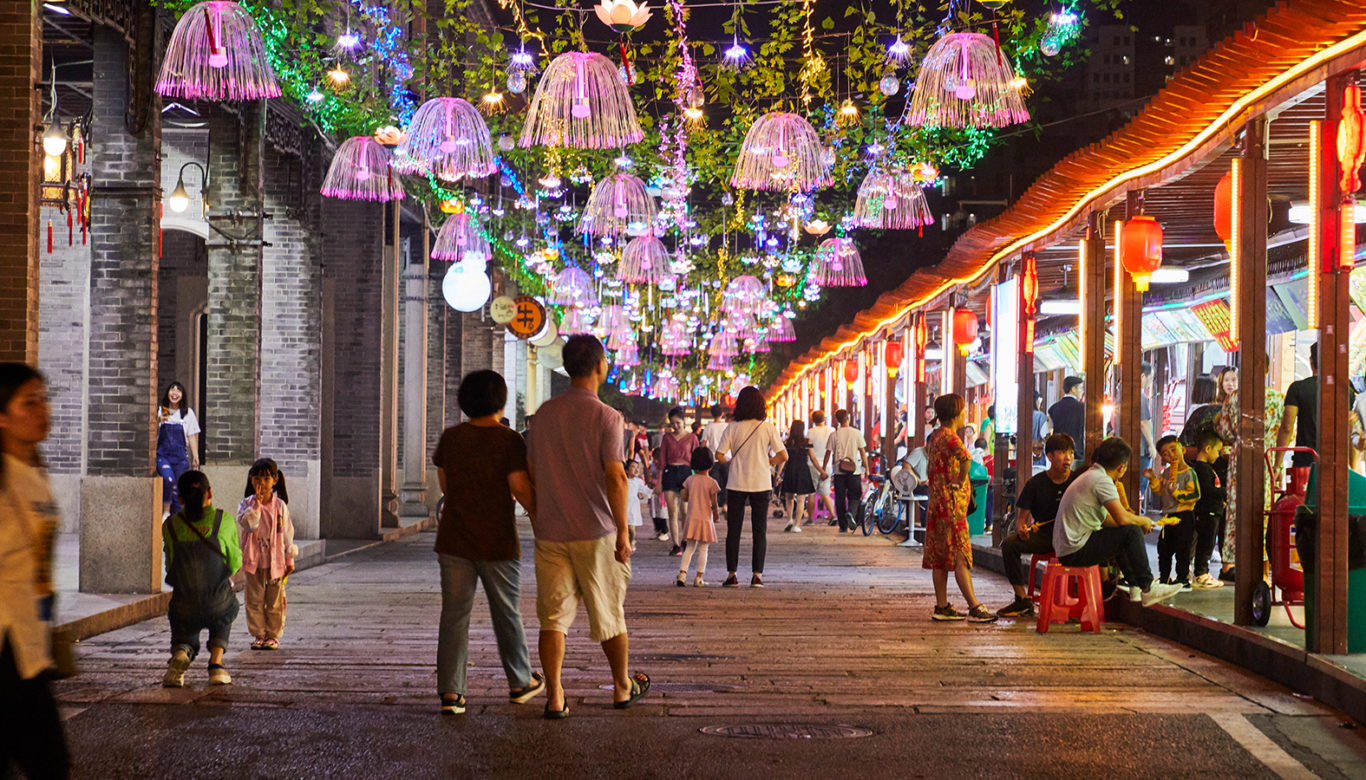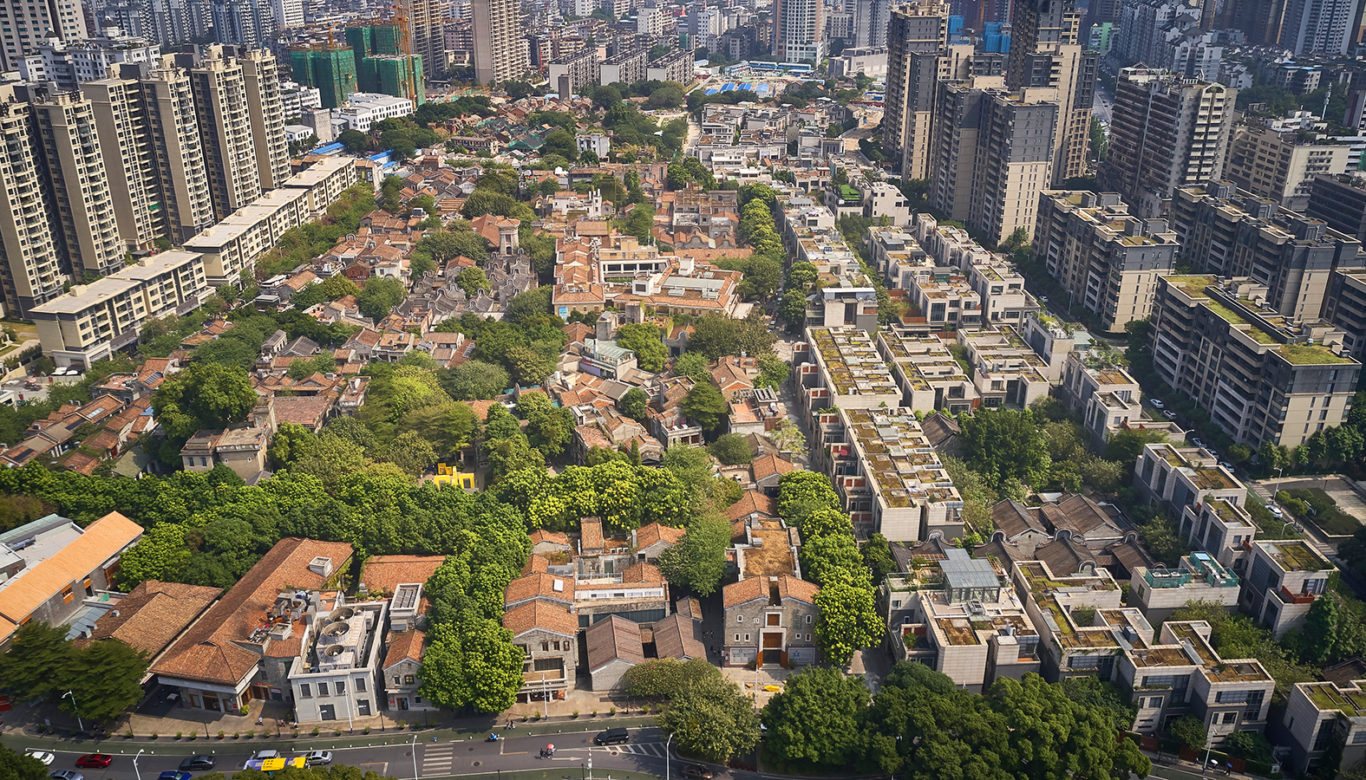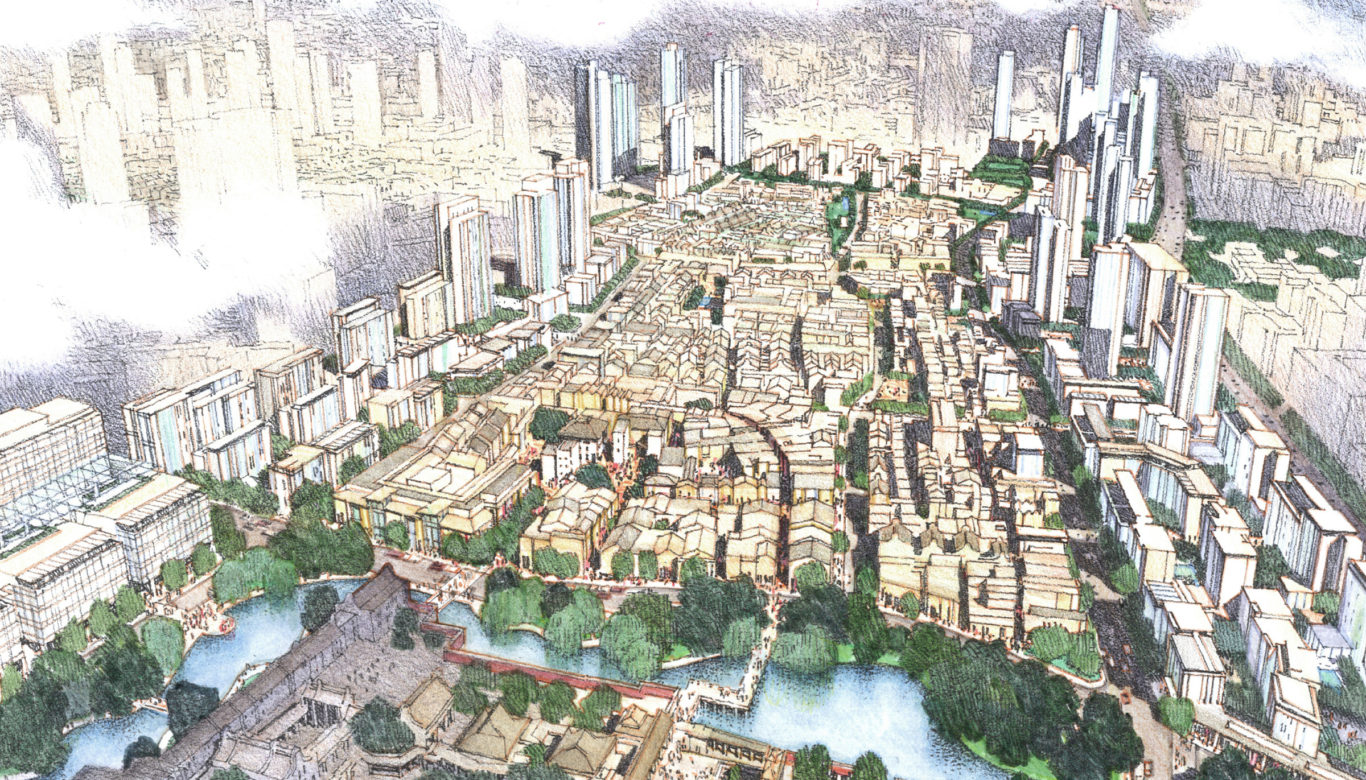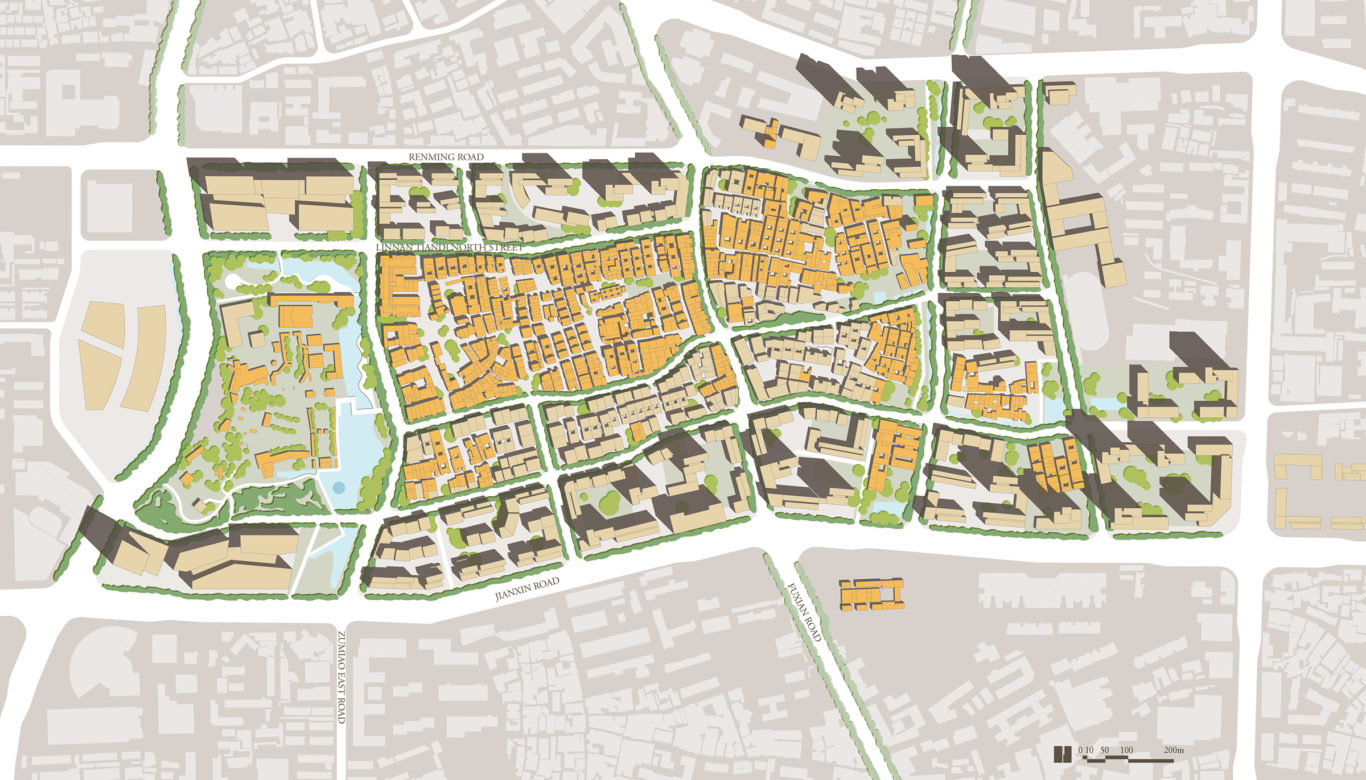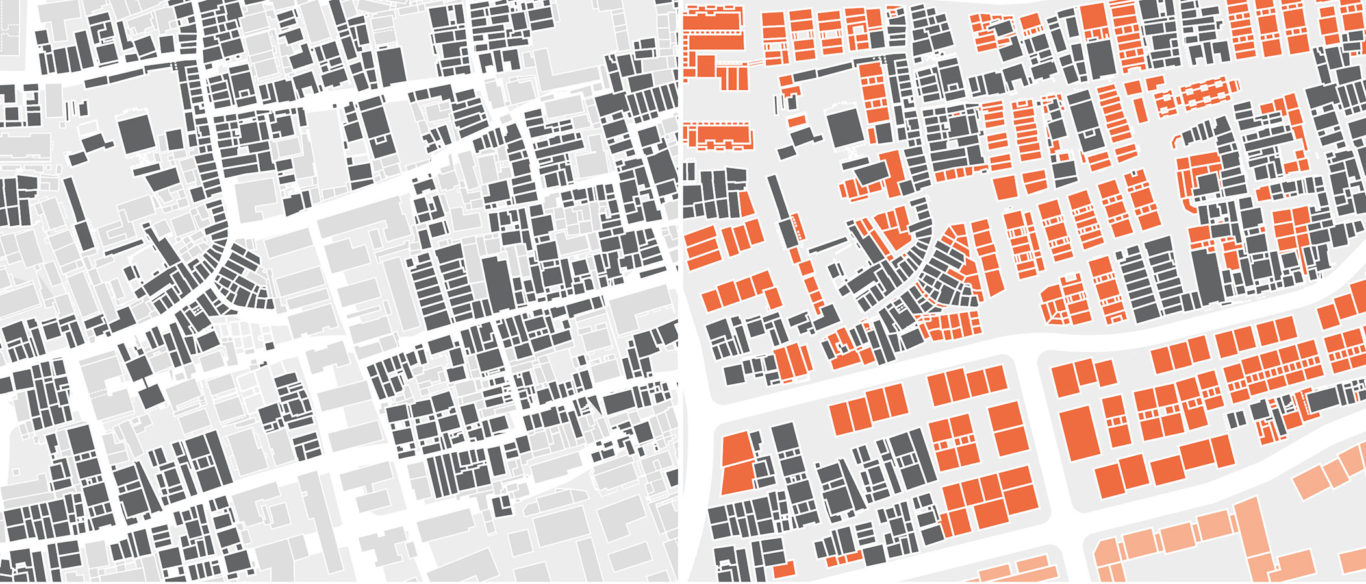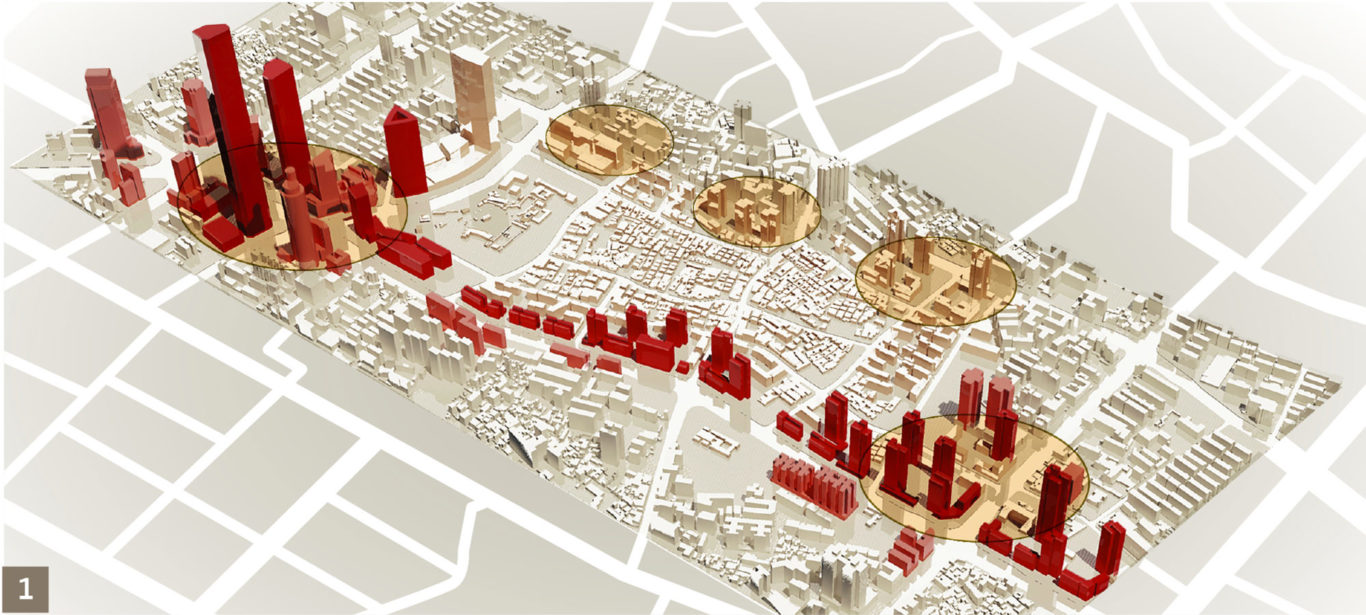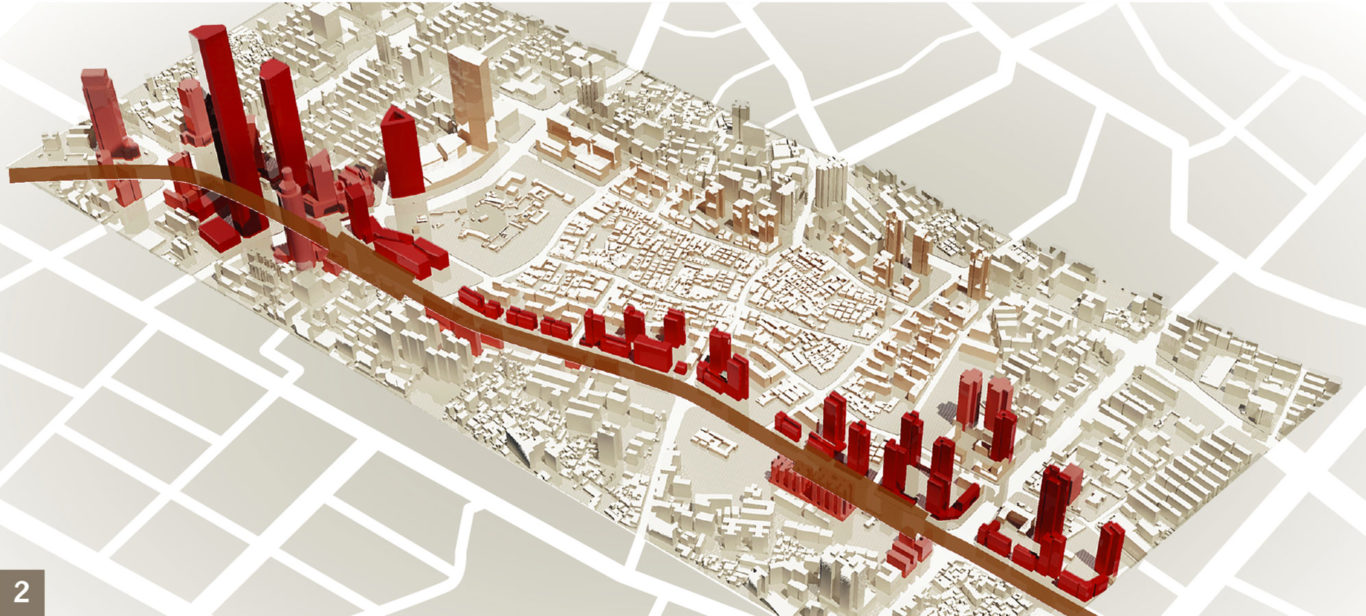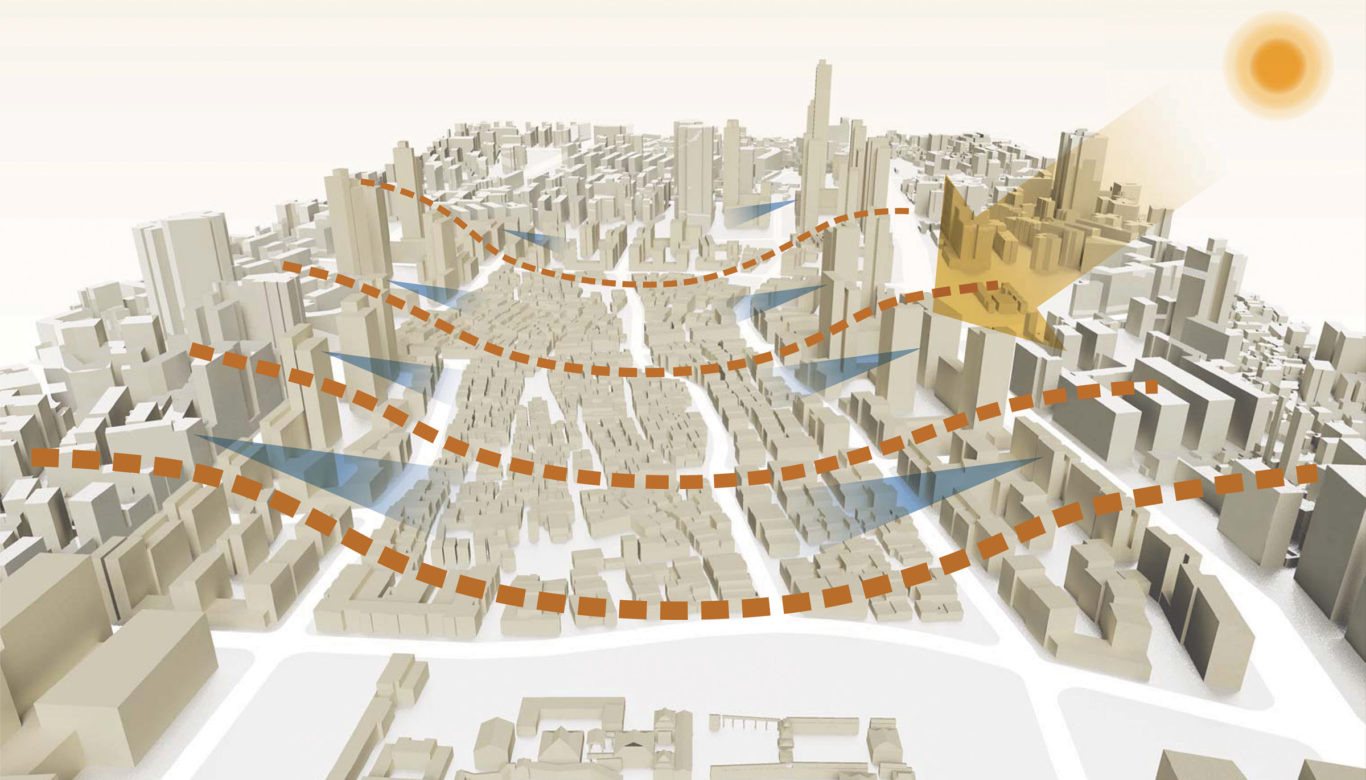Foshan, the third largest city in Guangdong Province, is renowned as one of China’s leading centers of art and scholarship. It also is home to Foshan Zumiao, the 900-year-old Song Dynasty Ancestral Temple, which sits at the heart of Donghuali Old Town. Like other historic areas in the country, this district has been threatened by unremitting high-rise development.
SOM’s plan identifies ways to conserve the ancient quarters while simultaneously creating a sustainable, modern central district able to accommodate growth. Shaped through a series of meetings with planners, developers, and city officials, the scheme proposes private development outside of the historic core. Guidelines establish density levels that could support a transit-oriented, mixed-use downtown while defraying the cost of preserving and restoring Old Town and its cherished temple. The plan outlines a range of sensitively scaled building heights, as well as walkable blocks to encourage pedestrian activity.
